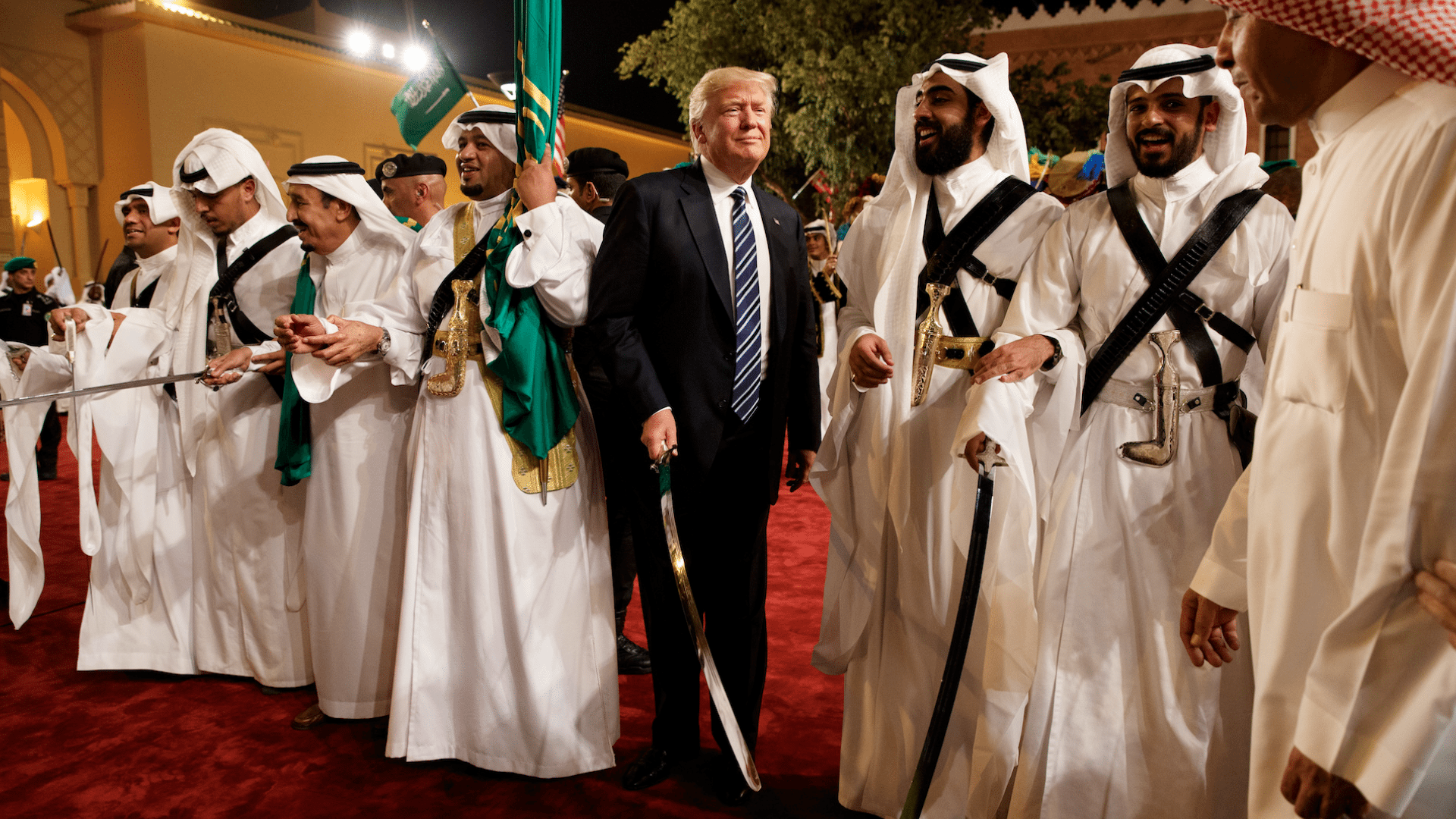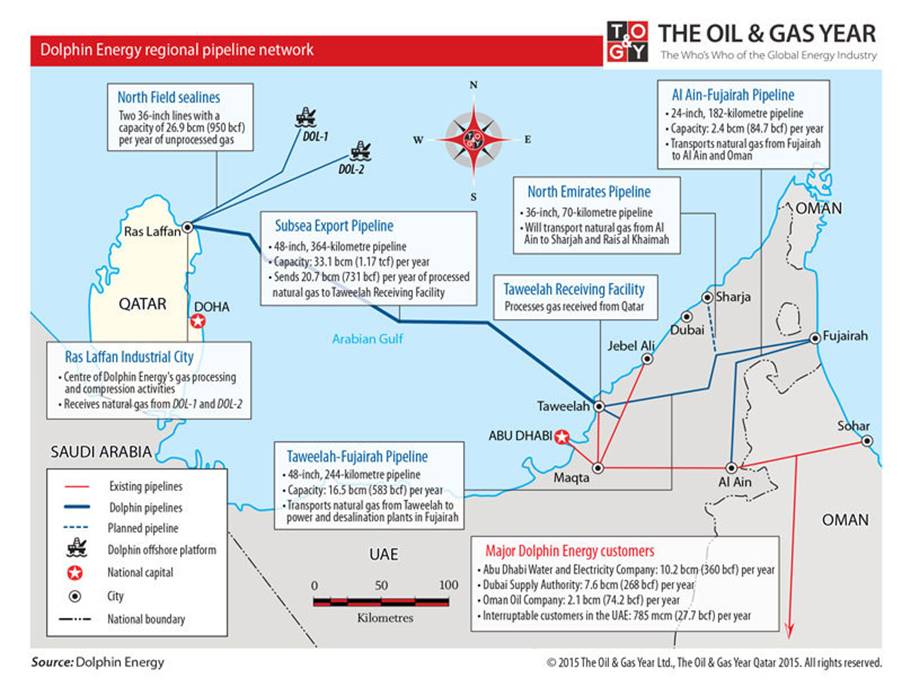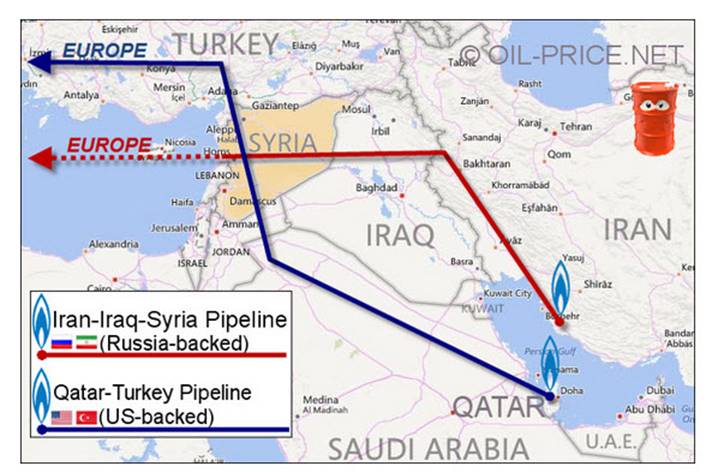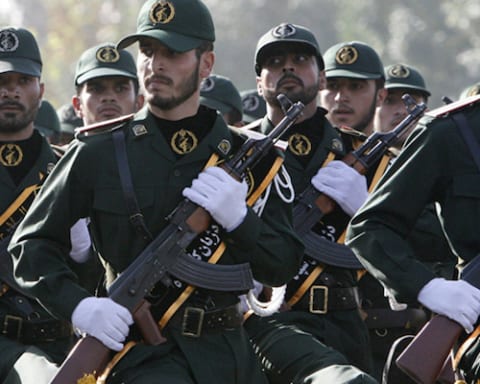Encouraged by the visit of Donald Trump to Saudi Arabia, five Arab countries suddenly cut diplomatic relations with Qatar, a U.S. ally that provides a vital base of operations for its military campaign against the Islamic State, accusing the small Gulf state of backing militant groups including the Islamic State and al-Qaeda. These states have announced that they were expelling Qatari diplomats, closing land, air and sea borders with Qatar and ordering Qatari nationals out of their countries. Kuwait and Oman are the only Gulf Cooperation Council members retaining ties with Qatar.
During my recent trip to the Middle East I stated that there can no longer be funding of Radical Ideology. Leaders pointed to Qatar – look!
— Donald J. Trump (@realDonaldTrump) June 6, 2017
While it is indeed true that Qatar has been very active in promoting groups like the Muslim Brotherhood, anathema to the Egyptians which just threw Morsi out of his elected office, the Muslim Brotherhood has had broad support from across the Middle East for years, especially in Turkey. When it comes to the active support and nurture of Islamic terrorists, however, few countries can match the support given to these groups by Saudi Arabia.
So good to see the Saudi Arabia visit with the King and 50 countries already paying off. They said they would take a hard line on funding…
— Donald J. Trump (@realDonaldTrump) June 6, 2017
…extremism, and all reference was pointing to Qatar. Perhaps this will be the beginning of the end to the horror of terrorism!
— Donald J. Trump (@realDonaldTrump) June 6, 2017
Saudi Arabia is the home of the Wahabbiya version of Sunni Islam, imported from Najd, the central region of Saudi Arabia. Islam was developed as a religion of the tribal Bedouin of the deserts. The fights within the Sunni have been between the faiths and practices of the tribal desert Arabs and the urban Arabs who set up cities and governments.
Among the Sunni states there has been a revival and expansion of the Wahhabi religious and nationalist movement originally formed in the late 18th century. Wahhabism (‘Salafi’) is named after an eighteenth century preacher and scholar, Muhammad ibn Abd al-Wahhab (1703–1792). He led a revivalist reaction to what he called the idolatrous practices of saints, impurities and innovations in Islam among the urban Arabs. He advocated a ‘purer’ form of Islam without the frills. He made an alliance with a local tribal leader, Muhammad bin Saud (‘Ibn Saud’), who went on to found the Saudi dynasty in Saudi Arabia in 1932. The House of Saud (the guardians of the Holy Cities) and Wahhabism were intimately involved in the rise of the Saudi state; and remain so today.

The Saudi leaders began their rule by suppressing other strains of Islam, especially in the Hijaz, and proselytising Wahhabism throughout the Middle East and Central Asia by funding madrassas and mosques preaching that line of belief. In order to consolidate its power over a large aggregation of competing desert tribes the al-Saud family joined with the descendants of Muhammad ibn Abd al-Wahab in a fractious marriage of convenience which has lasted since 1932. This relationship has been punctuated by bouts of rebellion. In Taif in the 1920s, the Wahhabis carried out a bloody rebellion. In 1932 the king put down a Wahhabi rebellion in the eastern Hasa region when the Saud’s allowed a Shia mosque to open. Saudi Arabia remains dependent on the tribes.
According to recent reports “From 40 percent to 60 percent of the nearly 20 million Saudi subjects still identify strongly with a tribe. Allegiance to tribe and Islamic heritage loosened during the 1970s oil boom, as a new national identity emerged and tribal leaders began to receive benefits from state agencies.”[i]
When it comes to the active support and nurture of Islamic terrorists, however, few countries can match the support given to these groups by Saudi Arabia.
The southern region of Asir, a remote mountainous land near Yemen, still is defined by its tribal culture more than any other region in Saudi Arabia, and it is from there that most of the September 11 hijackers came. Many of them were eager recruits to Osama bin Laden because he shared their Yemeni-Saudi tribal roots and because, like him, they resent being ruled by a clan that they believe does not enforce its Islamic authority with sufficient rigor and, in many cases, lives by double standards.

One Asir tribe, the million-strong al-Ghamdi, had an especially central role in September 11 and subsequent al Qaeda operations in Saudi Arabia. Four or five of the Saudi hijackers were al-Ghamdis, and the cave in Afghanistan where the plan for September 11 was hatched was named “al-Ghamdi house.” Three or four from the al-Qaeda cell that carried out the May 12 attacks in Riyadh last year were also al-Ghamdis, including the purported mastermind, Ali Abdul Rahman al-Faqaasi al-Ghamdi.[ii]
Saudi involvement with terrorists is no secret. Fifteen of the nineteen suicide hijackers on September 11, 2001 were Saudis. David Aufhauser, the Treasury Department’s general counsel and the senior U.S. official responsible for tracking terrorist financing, recently labelled Saudi Arabia and its Wahhabi doctrine the epicentre of global terrorist funding. The British government is being pressured to release a “sensitive” government report to be published which is thought to focus on the role Saudis play in funding terror groups and propaganda.

The Cost of Isolation
There is a price to be paid for this political isolation of Qatar which will be damaging to almost everybody, including the Saudis and the Gulf Cooperation Council. One of the most important prices to be paid is the isolation of Qatar in the regional integration of the natural gas industry.
The Dolphin Gas Project is one of the largest trans-border energy projects ever undertaken in the Middle East. The project brings natural gas from Qatar via pipeline to meet the growing energy needs of the United Arab Emirates (UAE). The $7bn project has brought together three Gulf Cooperation Council (GCC) nations – UAE, Qatar and Oman – into an integrated regional energy network for the first time.
The first phase involved the development of two platforms in Qatar’s North field, two multi-phase offshore sea lines to the processing facilities and the gas treatment and compression plants at Ras Laffan. The second phase involved the construction of a 48in diameter, 260 mile (364km) subsea pipeline that carries gas to the UAE (cost $3.5bn). The second phase was completed in August 2006.
The pipeline carried the first gas in 2007 and can carry up to two billion cubic feet of Qatar natural gas a day to the UAE for a period of 25 years. It also has the capacity to transport up to 3.2 billion cubic feet a day.
The gas is gathered in the North Field and delivered to Ras Laffan by underwater lines from the Dome which Qatar shares with Iran. It is then pumped underwater to Taweelah where it is split between various pipelines.

The plant receives wet gas from North field and removes valuable hydrocarbon liquids (including condensate and NGL products) for processing, marketing and spot sale. The plant compresses the resulting dry gas for transportation through the export pipeline to the UAE.
The plant can compress over two billion cubic feet (57 million cubic metres) of methane a day. The propane, butane and condensate are sold on the open market, but the ethane is supplied to Qatar Petroleum.
The facilities at Taweelah comprise three parallel gas-receiving trains and associated equipment, metering facilities, control buildings and warehouses and interconnecting pipelines to the Taweelah Power Stations and to the existing Maqta-Jebel Ali Pipeline.

There are plans to integrate this supply of gas to Europe and to other parts of the Middle East.

Now, with the blockage of Qatar, Abu Dhabi, Sharjah, Fujairah and Dubai will have to look elsewhere for their gas. Most importantly, the gas supply from Qatar is the energy source for the UAE’s water supply. Oman is not part of the boycott but its gas supply comes through the Maqta pipeline.
It makes no economic sense to proceed with this blockade of Qatar and little political sense either. Qatar is less willing to set up a political wall with Iran, largely because it shares the North Field-South Pars gas dome with Iran. It has supported the Muslim Brotherhood and paid lots of money to dissident groups – but far less than Saudi Arabia. It’s a war between pots and kettles and will be damaging to all parties.
When Trump visited Saudi Arabia and decided to be a partisan in the Sunni-Shia War he managed to convince the Saudis that they had an opportunity to bash Iran. This was a desperately ignorant piece of foreign policy by Trump and will only add to the turmoil and unrest in the region. One doesn’t have to be a fan of Qatar to see the folly in this blockade and to conceive of the damage it will do to everyone.
Dr. Gary K. Busch, for Lima Charlie News
Dr. Busch has had a varied career-as an international trades unionist, an academic, a businessman and a political intelligence consultant. He was a professor and Head of Department at the University of Hawaii and has been a visiting professor at several universities. He was the head of research in international affairs for a major U.S. trade union and Assistant General Secretary of an international union federation. His articles have appeared in the Economist Intelligence Unit, Wall Street Journal, WPROST, Pravda and several other news journals. He is the editor and publisher of the web-based news journal of international relations www.ocnus.net.
Lima Charlie provides global news, insight & analysis by military veterans and service members Worldwide.
For up-to-date news, please follow us on twitter at @LimaCharlieNews
SOURCES
[i] The Washington Times, “Wahhabism splits Saudis”, February 3, 2004.
[ii] ibid
In case you missed it:

![The commercial aspects of the rustication of Qatar [Lima Charlie News]](https://limacharlienews.com/wp-content/uploads/2017/06/Qatar-main.jpeg)


![Iranian crackdown on MEK shows the activist group has popular support [Lima Charlie News]](https://limacharlienews.com/wp-content/uploads/2019/05/Iran-MEK-Lima-Charlie-001-480x384.png)
![The Mind of Bolton - AUMF and the New Iran War [Lima Charlie News]](https://limacharlienews.com/wp-content/uploads/2019/05/Inside-the-mind-of-Bolton-Lima-Charlie-News-main-01-480x384.png)


![Africa’s Elections | In Malawi, food, land, corruption dominate [Lima Charlie News]](https://limacharlienews.com/wp-content/uploads/2019/06/Malawi-election-Food-land-corruption-480x384.jpg)
![Image What’s ailing South Korea? [Lima Charlie News]](https://limacharlienews.com/wp-content/uploads/2019/01/What’s-ailing-South-Korea-Lima-Charlie-News-480x384.png)
![Image Fed announcement triggers best trading session in over eight months [Lima Charlie News]](https://limacharlienews.com/wp-content/uploads/2018/11/Jerome-Powell-Reuters-480x384.jpg)
![image Resistance mounts against China's President Xi Jinping [Lima Charlie News][Photo: Johannes Eisele / AFP]](https://limacharlienews.com/wp-content/uploads/2018/08/Resistance-mounts-against-Chinas-President-Xi-Jinping-480x384.jpg)
![Iranian crackdown on MEK shows the activist group has popular support [Lima Charlie News]](https://limacharlienews.com/wp-content/uploads/2019/05/Iran-MEK-Lima-Charlie-001-150x100.png)
![The Mind of Bolton - AUMF and the New Iran War [Lima Charlie News]](https://limacharlienews.com/wp-content/uploads/2019/05/Inside-the-mind-of-Bolton-Lima-Charlie-News-main-01-150x100.png)